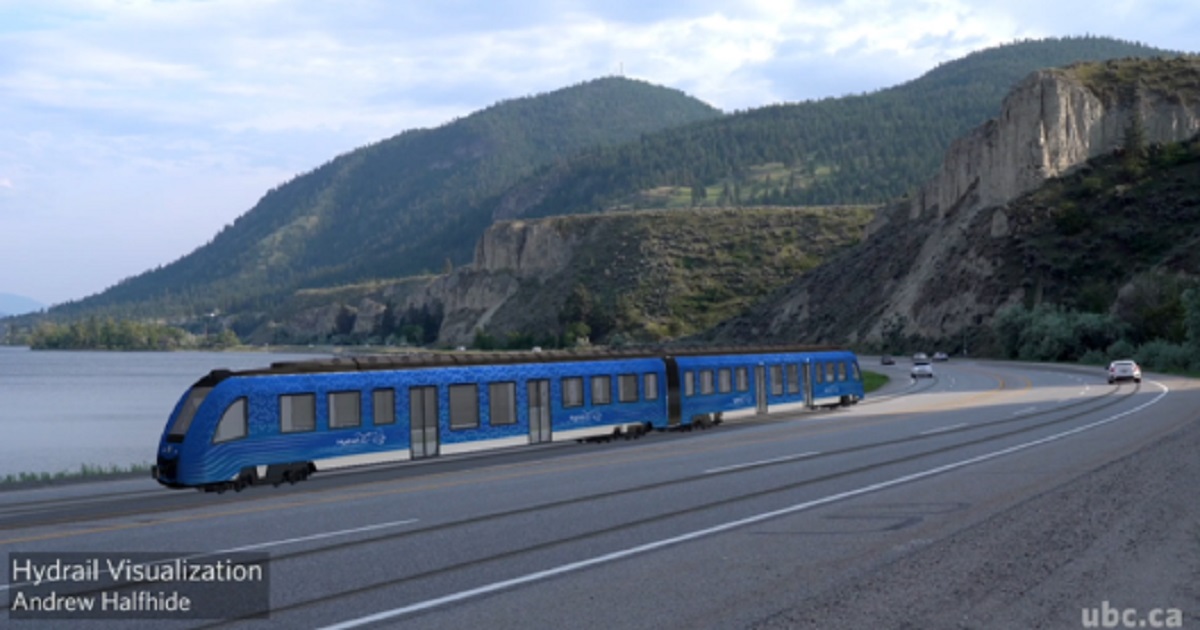Inter-urban Zero-Emission Rail Technology: Analyses of Emerging Passenger and Freight Transportation System Retrofits
A special issue of Sustainability (ISSN 2071-1050). This special issue belongs to the section "Sustainable Transportation".
Deadline for manuscript submissions: 6 October 2024 | Viewed by 769

Image courtesy of Dr. Gord Lovegrove and The University of British Columbia
Special Issue Editors
Interests: safe & sustainable transportation, including hydrail passenger tram-trains & freight rail linking inter-urban regions; affordability, housing & homelessness; sustainable quality of life & development patterns
Special Issues, Collections and Topics in MDPI journals
Interests: hydrail; energy; rail transport
Special Issue Information
Dear Colleagues,
The scope of this Special Issue relates to sustainable, inter-urban passenger and freight rail innovations that can help retrofit our rural and semi-rural regions with de-carbonized, safe, equitable, and affordable mobility. Its purpose is to share leading research and case studies of climate-friendly rail transport system analyses for the benefit of engineers, planners, researchers, and decision-makers, seeking a sustainable quality of life for all.
The United Nations Sustainable Development Goals (UN SDGs) were motivated by overarching social, environmental, and economic priorities, not the least of which speaks to the climate crisis (SDG 13). Clearly, there is a need to move away from unsafe, polluting, inefficient auto dependence and carbon-based fuels, which contribute between 20 and 50% of GHG emissions. Mobility solutions abound on how to plan for, and retrofit, urban areas globally to move people and freight, including rail and non-rail solutions. Given most urban travel consists of trips of less than 5 to 10 kilometers, many auto-alternative or ‘active transport’ (walk, bike, bus, truck, and light rail) solutions have been successfully researched, economically justified, and/or implemented via urban-based (e.g., density) arguments. However, the same cannot be said for, and the solution space is lacking with respect to, travel in rural and semi-rural regions between cities, where communities also need auto-alternative and de-carbonized solutions, but density does not justify costly traditional (e.g., grade-separated light rail) solutions.
As a result, these much-longer, inter-urban trips remain auto- and carbon-fuel dominated, and significant GHG emissions continue to wreak environmental havoc across low-density rural and semi-rural regions. Affordable, climate-friendly, auto- and carbon-alternative solutions are needed for all people in all communities, especially in these regions where longer trip distances mean GHG emissions are higher and contribute as significantly as in urban areas. However, solutions in rural areas must be practical, affordable, system-based, and convenient in order to shift people and freight from roads to rail. Yet, there are also urban interface issues with traditional diesel–electric freight and passenger rail (e.g., emissions, noise, and vibrations).
A century ago, rail-based public and freight transport was prevalent across rural Europe, Africa, Asia, and the Americas. But ubiquitous, affordable automobiles, trucking, and national highway systems provided attractive, convenient, economic, and technological substitutes. Today, our global climate and UN SDG imperatives are dictating a return to more sustainable inter-urban, regional transport systems, including de-carbonized rail systems. Retrofitting our inter-urban regions and communities to (re-)introduce traditional and carbon-based rail-based technology (e.g., diesel–electric and/or catenary–electric) would be cost prohibitive and not address the climate crisis. Full cost accounting and lifecycle assessments must lead technological innovation to address the UN SDGs post haste. Fortunately, there are affordable, climate-friendly, and sustainable passenger and freight rail innovations emerging that can inform our global community.
In keeping with the aims of the journal Sustainability, this Special Issue brings to bear what those innovations are, some of which revisit and refine traditional technologies, but all of which introduce new and improved innovative rail technologies for rural passenger and freight mobility.
In this Special Issue, original research articles and reviews are welcome. Research areas may include (but are not limited to) the following:
- Zero-emission rail power, such as:
- Plug-in and/or opportunity rail charging stations;
- Hydrogen fuel cell/battery electric rail power (hydrail);
- Track-side hydrogen fuelling stations.
- Rail vehicle innovations, such as:
- Hydrail tram-trains;
- Battery electric passenger and/or freight locomotives;
- Hydrail freight locomotives;
- Onboard energy storage.
- Feasibility studies on:
- Lifecycle assessments of emerging hydrail technology;
- Economic (i.e., full cost accounting) feasibility in low-density rural areas;
- Technical feasibility in mountainous, curvilinear, and extreme climates.
We look forward to receiving your contributions.
Dr. Gord Lovegrove
Dr. Holger Busche
Dr. Mohamed Hegazi
Guest Editors
Manuscript Submission Information
Manuscripts should be submitted online at www.mdpi.com by registering and logging in to this website. Once you are registered, click here to go to the submission form. Manuscripts can be submitted until the deadline. All submissions that pass pre-check are peer-reviewed. Accepted papers will be published continuously in the journal (as soon as accepted) and will be listed together on the special issue website. Research articles, review articles as well as short communications are invited. For planned papers, a title and short abstract (about 100 words) can be sent to the Editorial Office for announcement on this website.
Submitted manuscripts should not have been published previously, nor be under consideration for publication elsewhere (except conference proceedings papers). All manuscripts are thoroughly refereed through a single-blind peer-review process. A guide for authors and other relevant information for submission of manuscripts is available on the Instructions for Authors page. Sustainability is an international peer-reviewed open access semimonthly journal published by MDPI.
Please visit the Instructions for Authors page before submitting a manuscript. The Article Processing Charge (APC) for publication in this open access journal is 2400 CHF (Swiss Francs). Submitted papers should be well formatted and use good English. Authors may use MDPI's English editing service prior to publication or during author revisions.
Keywords
- rail transport
- retrofit
- de-carbonized
- zero emissions
- hydrogen fuel cell
- hydrail
- battery electric
- passenger rail
- freight rail
- low-density
- inter-urban
- affordable







